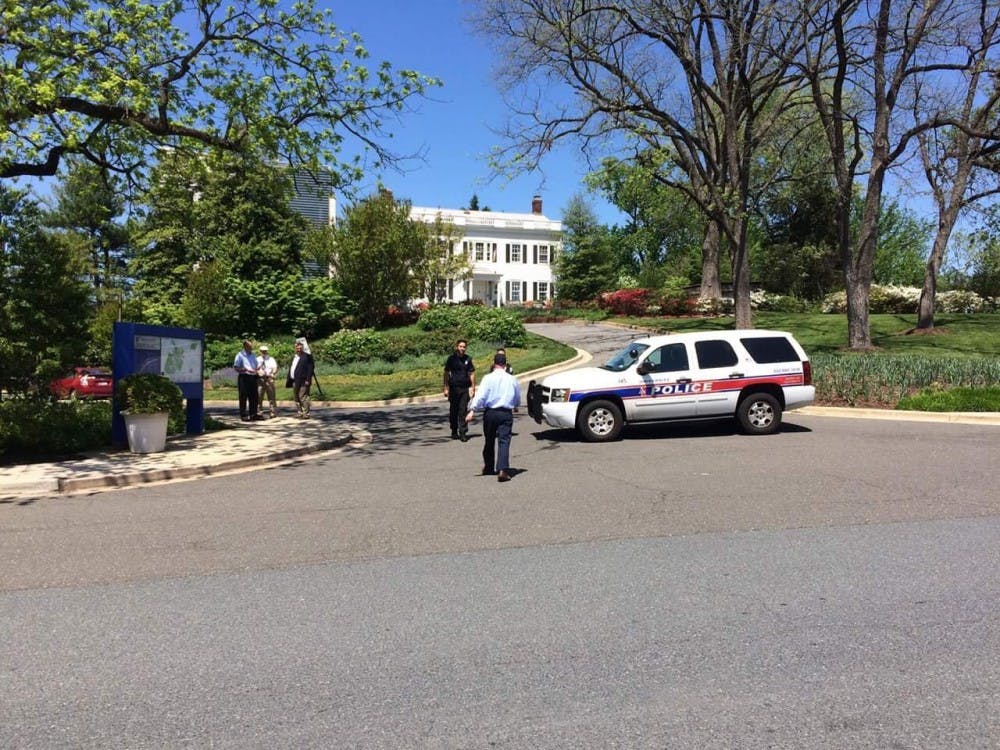Members of the AU grounds crew found a suspicious item in front of the President’s Office Building on Friday morning that was later revealed to be an “exploded ordnance item” dating back to World War I, according to Camille Lepre, the University’s assistant vice president of communications.
Following the discovery of the item by crew members, AU notified the U.S. Army Corps of Engineers (ACE) of the find, Lepre said. ACE officials then came to campus to evaluate the item and determined it was a detonated explosive from the Army’s World War I American University Experiment Station, Lepre told The Eagle.
“ACE supervised its removal from campus,” Lepre said in an email. “It was not a danger to the community.”
An exploded ordnance item can be described as a “munitions item that has been exploded/detonated,” said Chris Gardner, an official in the corporate communications office at the Baltimore District of ACE. He said ACE officials suspect the item could be classified as munitions debris, or leftover debris from an explosive.
“We don’t have exact details on what happened to the item originally, but it appears to have been detonated in place, presumably during the time parts of American University were used by the Army during WWI,” Gardner said in an email. “The item discovered today would be remnant of those past military activities.”
During World War I, AU was used as a testing site for military weapons including ammunition, chemical weapons and other weapon paraphernalia. After the war, land which now includes portions of AU and extends into the adjacent Spring Valley neighborhood was used to bury hazardous materials and remaining munitions, The Eagle previously reported.
A report released by ACE in March 2015 determined that there are likely residual WWI munitions below the Public Safety Building on the south end of campus. The report did not directly refer to the President’s Office Building or the area surrounding it.
“The U.S. Army Corps of Engineers has been and is continuing to actively investigate and remediate remnants of past military activity on the AU campus and in the surrounding community as part of the Spring Valley Formerly Used Defense Site project since the 1990s,” Gardner said in the email.
In an interview, Gardner added that incidents like the one on Friday are not common occurrences at AU.
“It’s not, obviously, unheard of, but it’s not something that we’re getting calls about all the time,” Gardner said. “But we’re ready for them, and we have the expertise to respond to them.”
The University referred to the incident as “police/fire activity” in an AU alert sent out to the campus community. AU police responded to the scene and secured the area around the building, Lepre said. The D.C. fire department was not called to respond to the incident, said Doug Buchanan, chief communications officer for D.C.’s department of fire and emergency medical services.
AU Alert: There is police/fire activity at the POB Entrance. Please avoid the area. More information will follow.
— AU Police (@AUPublicSafety) April 28, 2017
Anyone who encounters something that seems unusual or appears metallic, especially if they are digging, should retreat from the item and report it to the appropriate authorities, Gardner said.
Anna Donohue contributed reporting to this article.





